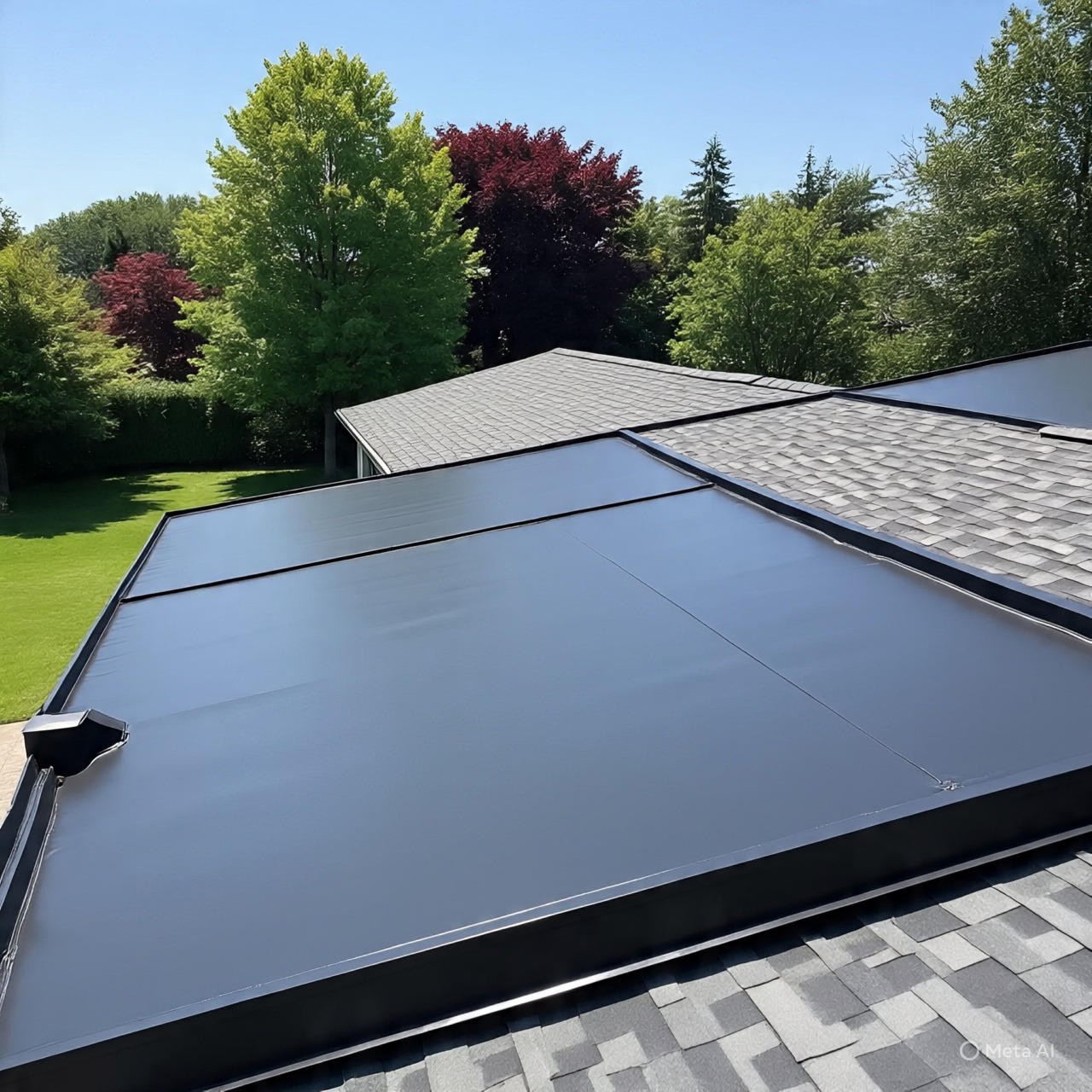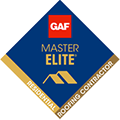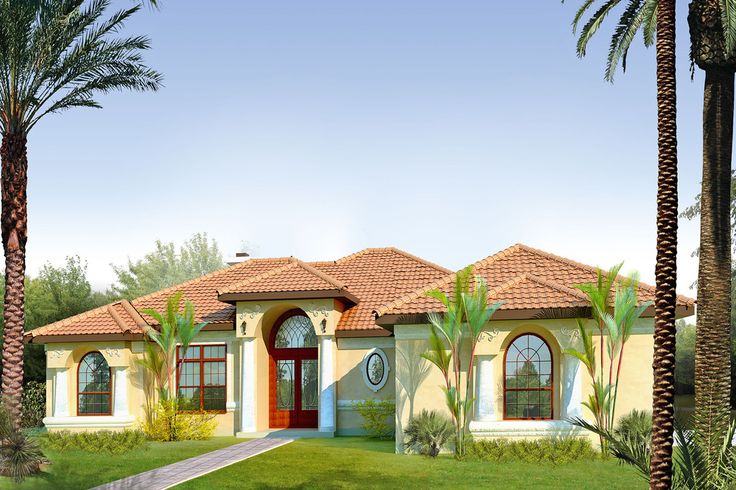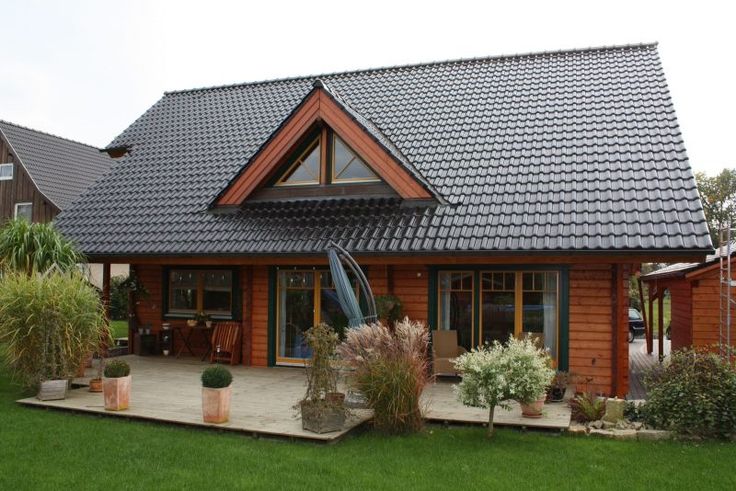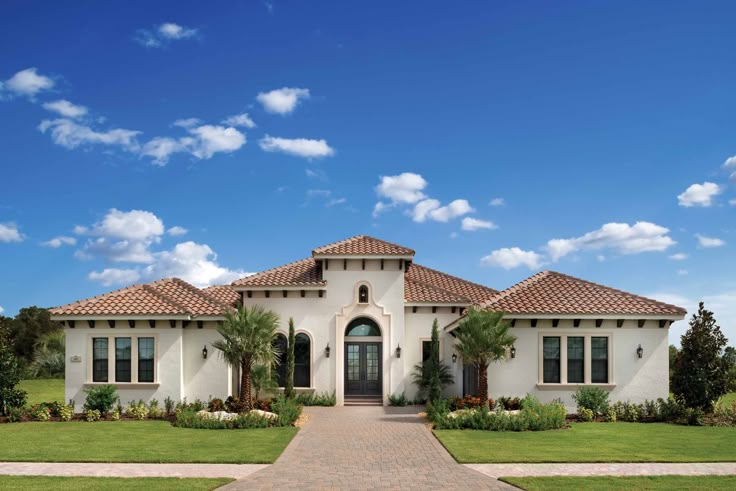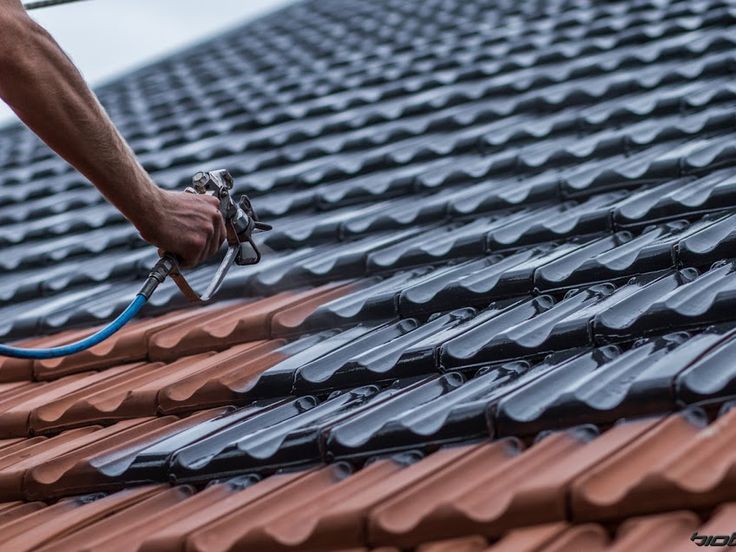When it comes to durable and cost-effective roofing solutions, EPDM roofing stands out as one of the most popular choices for commercial and residential flat roofs. At Sierra Roof Inc., we specialize in delivering high-quality roofing systems across Southern California, and EPDM is a leading option we proudly offer.
In this detailed guide, we’ll cover everything you need to know about EPDM roofing from what it is and how it works to its benefits, installation process, maintenance tips, and why Sierra Roof Inc. is the right contractor for your next roofing project.
What Is EPDM Roofing?
EPDM roofing short for Ethylene Propylene Diene Monomer is a highly durable, synthetic rubber membrane specifically designed for flat and low-slope roofs. Known for its exceptional weather resistance, flexibility, and long service life, EPDM has become one of the most widely used commercial and residential roofing solutions in the U.S. and around the world.
A Closer Look at EPDM
EPDM is made from a mix of ethylene, propylene, and diene chemicals, which come from natural gas and oil. This makes the material flexible, stretchy, and strong. It feels like rubber, which lets it stretch and bounce back without breaking, even in very hot or cold weather.
Other types of roofing materials can get stiff or break down when exposed to strong sunlight, ozone, or extreme temperatures. But EPDM stays the same and works well in both hot climates like Southern California and cold areas like the northern winters.
EPDM Roofing Membrane Structure
EPDM is classified as a single-ply membrane, which means it consists of one continuous layer applied across the surface of the roof. This single-ply format minimizes seams often a weak point in other roofing types and helps prevent leaks and water penetration.
EPDM sheets typically come in large rolls, ranging from 10 to 50 feet in width and up to 200 feet in length, allowing installers to cover vast surface areas quickly and with minimal seams. The membrane is usually available in thicknesses of:
- 45 mil
- 60 mil (most common)
- 90 mil (for heavy-duty applications)
Installation Methods
EPDM roofing can be installed using three primary techniques, depending on building design, location, and climate:
- Fully Adhered:
The membrane is bonded directly to the substrate (roof surface) using specially formulated adhesives. This method offers excellent wind uplift resistance and is ideal for high-wind areas or buildings where aesthetics matter. - Mechanically Attached:
The membrane is secured with fasteners and plates, then the seams are sealed with EPDM tape or adhesives. It’s a cost-effective option and provides good performance for large commercial rooftops. - Ballasted:
In this method, the EPDM membrane is laid loosely over the insulation and then held in place with a layer of river rock or concrete pavers. Though less common in residential settings, it’s popular for large, flat commercial roofs due to its simplicity and affordability.
Color Options: Black vs. White EPDM
EPDM is available in two primary color options, each serving a different purpose depending on climate and energy goals:
- Black EPDM:
The traditional and most common option, black EPDM is formulated with carbon black, which absorbs solar heat. This makes it particularly beneficial in cooler climates, as it can help lower heating costs by absorbing and retaining warmth. - White EPDM:
Designed for warmer climates, white EPDM reflects sunlight, which helps reduce cooling loads during hot summer months. Although slightly more expensive, white EPDM is ideal for buildings prioritizing energy efficiency and compliance with cool roofing standards.
Common Applications
EPDM roofing is suitable for a wide variety of applications, including:
- Commercial flat roofs
- Residential flat and low-slope roofs
- Garage and shed roofs
- Roof decks and patios
- Green roof systems (as a waterproof base layer)
Because of its versatility, EPDM is a go-to choice for architects, builders, and facility managers seeking a balance between performance and budget.
Performance Benefits of EPDM Roofing
- ✅ Extreme Flexibility: Can expand and contract with temperature changes without cracking
- ✅ UV and Ozone Resistance: Withstands prolonged sun exposure without degradation
- ✅ Low Maintenance: Requires minimal upkeep and is easy to inspect and repair
- ✅ Proven Track Record: Over 50 years of successful use in the roofing industry
- ✅ Puncture Resistant: Thick and rubbery texture resists tears and abrasions
- ✅ Environmentally Friendly: Recyclable and energy-efficient options available
Why Choose EPDM Roofing?
When you’re looking for a roofing option for a flat or low-slope roof, you want something that’s not only cost-effective but also long-lasting, energy-saving, and reliable. That’s why EPDM roofing remains a popular choice for both commercial and residential property owners. Whether you’re handling a big industrial building or keeping your home safe from the intense heat of Southern California, EPDM provides a strong mix of performance and confidence.
Let’s look at the main reasons why EPDM roofing is seen as one of the top choices in the roofing industry right now:
Longevity: Decades of Reliable Performance
One of the most impressive qualities of EPDM roofing is its exceptional lifespan. A properly installed EPDM roof, especially one maintained by professionals like Sierra Roof Inc., can last 30 to 50 years far longer than many traditional roofing materials such as asphalt or built-up roofing (BUR).
The synthetic rubber formulation of EPDM makes it resistant to aging, deterioration, and shrinkage. It doesn’t crack under pressure or brittle in extreme conditions, which means fewer repairs and a better return on investment over the long term.
For property owners, this means:
- Fewer disruptions from repairs or replacements
- Long-term financial savings
- A roofing system that protects your investment for generations
Superior Weather Resistance
EPDM roofing is designed to withstand everything Mother Nature throws its way. Whether you’re dealing with heavy rains, high winds, hailstorms, or intense UV radiation, EPDM holds strong where other roofing systems may falter.
Key weather-resistant features include:
- UV Resistance: Unlike asphalt or modified bitumen, EPDM doesn’t degrade in prolonged sunlight.
- Temperature Tolerance: EPDM remains stable in extreme temperatures ranging from -40°F to 300°F making it perfect for both cold and hot climates.
- Impact Resistance: Its thick, rubber-like material helps absorb impacts from hail, debris, and even foot traffic during maintenance.
- Waterproofing: EPDM’s seamless installation options drastically reduce the risk of leaks, especially on large commercial rooftops.
This level of durability ensures that your roofing system will remain intact and functional during the most extreme seasonal shifts.
Low Maintenance Requirements
If you’re looking for a roofing system that won’t demand constant upkeep, EPDM roofing is an excellent option. Once installed, it requires very little to maintain its integrity.
Routine maintenance typically includes:
- Annual or biannual inspections
- Debris removal (especially around drains and seams)
- Occasional cleaning using EPDM-safe solutions
- Minor seam or puncture repairs if needed
Thanks to its resistance to mold, mildew, and moisture, EPDM does not rot or develop water-related decay. This keeps the surface healthy and watertight for years with minimal effort.
At Sierra Roof Inc., we offer EPDM maintenance services that help you catch small issues early—so you avoid expensive repairs later.
Energy Efficiency That Pays Off
Energy performance is another reason why so many building owners are switching to EPDM roofing, especially in regions with fluctuating temperatures like Southern California.
There are two energy-efficient options to choose from:
- Black EPDM Membranes:
These absorb heat, making them great for cooler climates or for reducing heating needs in winter months. They help melt snow and ice faster, which can also reduce weight loads and potential water damage. - White EPDM Membranes (Cool Roofs):
Designed for hot climates, white EPDM reflects the sun’s rays, reducing surface temperatures and helping maintain a cooler interior. This reduces the need for air conditioning and lowers utility bills.
Either way, EPDM helps keep indoor temperatures more stable, lowers the need for heating and cooling systems, and allows buildings to earn green building credits such as LEED or ENERGY STAR®.
Eco-Friendly Roofing Solution
Today’s property owners are increasingly concerned with sustainability, and EPDM roofing doesn’t disappoint. It’s one of the most environmentally friendly flat roofing materials on the market.
Here’s why EPDM is a green choice:
- Recyclable: When your EPDM roof reaches the end of its life, the membrane can be recycled into new roofing products or used in other rubber-based materials.
- Low Manufacturing Impact: EPDM production requires less energy and creates fewer byproducts than many other synthetic materials.
- Long Lifespan Reduces Waste: Because EPDM lasts 30–50 years, it drastically reduces the volume of roofing materials that end up in landfills.
- Compatible with Green Roofs & Solar Panels: EPDM can serve as a base membrane for vegetative (green) roofs and works well with solar panel systems due to its smooth, stable surface.
In an age where building sustainably is more important than ever, EPDM roofing helps you meet both performance and environmental goals.
The Sierra Roof Inc. Advantage
When you choose Sierra Roof Inc. to install or maintain your EPDM roofing system, you’re not just getting a great product you’re getting the experience and dedication of one of Southern California’s most trusted roofing contractors.
We specialize in:
- Custom EPDM installation for flat and low-slope roofs
- EPDM roof repairs and patching
- Preventative maintenance and inspections
- Full roof replacements using high-quality EPDM membranes
- Energy-efficient roofing solutions with white EPDM
Whether you’re a commercial property manager looking to reduce maintenance costs or a homeowner upgrading your flat roof, our team will guide you through every step from estimate to installation to long-term support.
EPDM Roofing vs. Other Flat Roofing Systems
| Feature | EPDM Roofing | TPO Roofing | PVC Roofing |
|---|---|---|---|
| Material | Synthetic Rubber | Thermoplastic Olefin | Polyvinyl Chloride |
| Lifespan | 30–50 Years | 20–30 Years | 20–30 Years |
| UV Resistance | Excellent (Black) | Excellent (White) | Excellent |
| Energy Efficiency | Moderate to High | High | High |
| Flexibility | High | Medium | Medium |
| Cost | $$ | $$ | $$$ |
| Installation Options | Adhered, Fastened, Ballasted | Adhered, Fastened | Adhered, Fastened |
While all three are solid choices, EPDM roofing is particularly beneficial for budget-conscious property owners seeking durability, flexibility, and long-term value.
Our EPDM Roofing Services at Sierra Roof Inc.
At Sierra Roof Inc., we understand that every roofing project is unique. That’s why we offer a full suite of EPDM roofing services tailored to meet the needs of residential, commercial, and industrial clients throughout Southern California. Whether you’re planning a new construction project, upgrading an outdated system, or addressing leaks and storm damage, our experienced team is here to deliver long-lasting solutions with unmatched workmanship and professionalism.
Here’s how we bring the power of EPDM roofing to your property:
EPDM Roof Installation
Looking for a roofing system that’s built to last? Our EPDM roof installation service is the ideal choice for new construction projects or properties needing a robust flat-roof solution. We start with a detailed assessment of your roof’s structural integrity, drainage, and insulation needs. From there, we recommend the most suitable installation method based on your building type and budget:
- Fully Adhered EPDM: Ideal for enhanced wind resistance and a clean, smooth appearance.
- Mechanically Fastened EPDM: A cost-effective option that’s fast to install, especially on large surfaces.
- Ballasted EPDM: Suitable for large commercial roofs, where weight-bearing capacity allows for stone or paver stabilization.
Each EPDM system is installed with precision, adhering to the latest California building codes and industry best practices. Our membranes come in high-quality thicknesses (60 mil or 90 mil) for maximum durability and leak protection.
EPDM Roof Replacement
If your current roofing system is showing signs of wear cracking, ponding water, membrane shrinkage, or seam failure it’s time to consider a full EPDM roof replacement. Our team at Sierra Roof Inc. specializes in safe, efficient tear-off and replacement services designed to restore your building’s weatherproof integrity and performance.
We remove the old roofing layers, inspect the underlying structure for damage, and install a brand-new, energy-efficient EPDM roofing system designed to last for decades. We can even upgrade your insulation during the process to improve thermal performance and lower your energy bills.
Whether you’re replacing an outdated tar-and-gravel system or transitioning from another flat roofing material, we ensure your new EPDM system is watertight, weatherproof, and future-ready.
EPDM Roof Repair
Even the toughest roofing systems can develop issues over time due to harsh weather, foot traffic, or aging materials. That’s where our EPDM roof repair service comes in. We offer fast, affordable, and effective repair solutions that extend the life of your roof and prevent costly structural damage.
Common EPDM roof issues we repair include:
- Seam separation or lifting
- Tears or punctures from debris
- Ponding water or poor drainage
- Loose flashing or membrane shrinkage
- Interior water stains or roof leaks
Our technicians use EPDM-compatible adhesives, patches, and sealants to ensure all repairs blend seamlessly with the existing system. Whether it’s an emergency leak or a scheduled service, we respond quickly to restore your roof’s protective barrier.
EPDM Roof Maintenance
Routine EPDM roof maintenance is critical for maximizing the lifespan of your roofing system and minimizing unexpected repair costs. At Sierra Roof Inc., we offer customizable maintenance programs for homeowners, property managers, and commercial building owners.
Our maintenance services include:
- Comprehensive inspections (semi-annual or annual)
- Debris and drain clearing to prevent standing water
- Surface cleaning with EPDM-safe solutions
- Sealing of minor cracks or exposed seams
- Detailed reports outlining current roof condition
With regular upkeep, your EPDM roof can perform at its peak for 30 to 50 years. Maintenance plans also help you stay compliant with warranty requirements and local building codes.
Free Roof Inspections & Estimates
At Sierra Roof Inc., we believe in full transparency and customer education. That’s why we provide free roof inspections and detailed estimates for all EPDM roofing projects. Whether you’re planning a new installation, considering a replacement, or dealing with sudden leaks, our certified professionals will evaluate your roof and offer a clear, honest recommendation.
Our inspections include:
- Roof condition assessment
- Identification of problem areas
- Review of flashing, seams, and drainage
- Thermal imaging (upon request) to detect hidden moisture
Once complete, you’ll receive a written estimate outlining scope, materials, timeline, and cost no guesswork, no hidden fees.
Why Southern California Trusts Sierra Roof Inc. for EPDM Roofing
Our reputation in the Los Angeles, Orange County, and Inland Empire areas is built on quality, reliability, and customer satisfaction. When you choose Sierra Roof Inc., you’re choosing:
✅ Experienced EPDM Specialists
✅ Licensed, Insured, and Certified Contractors
✅ Locally Owned and Operated
✅ High-Quality, Code-Compliant Materials
✅ Prompt Service and Clean Worksites
From rooftop inspections to long-term performance, we ensure every EPDM roofing job is handled with expert care and attention to detail.
How EPDM Roofing Is Installed
At Sierra Roof Inc. , we use a careful and well-proven method when installing EPDM roofing systems. Correct installation is very important to make sure the roof works well for many years, providing long-lasting protection, better energy use, and less need for repairs. Our skilled workers follow strict quality checks and the best practices in the industry at every part of the installation to ensure a leak-proof and strong finish.
Here’s a step-by-step overview of our EPDM roofing installation process:
Roof Inspection & Preparation
Every successful roofing project begins with a comprehensive roof inspection and surface preparation.
- Structural Evaluation: We begin by assessing the structural integrity of the existing roof. We inspect for damage, dry rot, sagging areas, or compromised decking that needs repair.
- Tear-Off (if needed): If your existing roof system is damaged or incompatible with EPDM, we carefully remove the old roofing material to expose the deck.
- Cleaning and Smoothing: The roof surface is cleaned and smoothed to ensure proper adhesion of the EPDM membrane. Any protruding nails or debris are removed, and the decking is secured and leveled.
Proper preparation ensures that the EPDM membrane will bond securely and remain leak-free for decades.
Insulation Layer Installation
Once the substrate is ready, we install an insulation layer a critical step for improving your building’s energy efficiency and roof performance.
We typically use:
- Polyisocyanurate (Polyiso): The most common and effective insulation, offering a high R-value per inch.
- Expanded Polystyrene (EPS): A more economical option that provides solid thermal protection.
- Tapered Insulation Systems: Installed to direct water toward drains or scuppers on flat roofs to eliminate ponding.
Insulation boards also provide a smooth, even surface for membrane application and help reduce heating and cooling costs.
EPDM Membrane Application
With the insulation in place, we move on to applying the EPDM membrane the heart of the roofing system. The membrane is rolled out in large sheets, measured, and cut on-site to fit the specific dimensions of your roof.
There are three main installation methods, and we choose the best one based on your building’s needs and budget:
Fully Adhered EPDM
- How it works: The membrane is bonded directly to the insulation or substrate using a specialized adhesive.
- Benefits: Offers superior wind resistance and a sleek, uniform finish.
- Best for: Residential properties and buildings in high-wind areas.
Mechanically Fastened EPDM
- How it works: The membrane is secured using mechanical fasteners and plates along the seams or field of the roof. Seams are then sealed with EPDM tape or adhesive.
- Benefits: Cost-effective and quick to install.
- Best for: Large commercial buildings and industrial flat roofs.
Ballasted EPDM
- How it works: The membrane is laid loose and held in place using heavy stones, pavers, or gravel.
- Benefits: Simple and inexpensive with no adhesives or fasteners.
- Best for: Large commercial roofs with the structural capacity to support additional weight (not typically used in residential applications).
Our experts ensure that the EPDM membrane is installed with precision, avoiding wrinkles or bubbles that could affect performance.
Sealing Seams & Flashing Penetrations
Sealing is the most critical phase of the EPDM roofing installation process, as it prevents water intrusion and ensures long-term performance.
- Seam Sealing: Seams where membrane sheets overlap are sealed using high-strength adhesive or pressure-sensitive EPDM seam tape. These materials bond the membranes together to create a completely waterproof barrier.
- Flashing Installation: We install custom-fitted flashing around all roof penetrations such as pipes, vents, HVAC units, skylights, and edges. This ensures that water cannot seep into vulnerable areas.
- Edge Terminations: Perimeter areas are secured with termination bars or edge metal flashing to prevent membrane uplift from wind or water.
Proper seam and flashing installation is crucial to the watertight integrity and overall durability of your EPDM roof.
Final Inspection & Quality Assurance
Once the membrane is fully installed and sealed, we perform a thorough final inspection to verify the integrity of the roofing system.
Our inspection checklist includes:
- Ensuring all seams are properly bonded and free of air bubbles or gaps
- Confirming all flashing is tightly secured and sealed
- Testing for proper drainage and identifying any areas of ponding
- Verifying insulation stability and membrane alignment
- Cleaning the work area and removing all debris
Only after passing our rigorous quality checks is the project deemed complete. We then provide our clients with maintenance guidelines and any warranty documentation related to the materials and labor.
Why Choose Sierra Roof Inc. for EPDM Roofing?
Choosing the right contractor is just as important as selecting the right material. Here’s why customers across Southern California trust Sierra Roof Inc.:
Experienced EPDM Specialists
Our licensed and insured crew has years of hands-on experience with EPDM systems.
High-Quality Materials
We use premium-grade EPDM membranes backed by manufacturer warranties.
Transparent Pricing
No hidden fees or last-minute surprises just honest work and fair quotes.
Emergency Repairs Available
We’re available for urgent roofing needs, especially during rainy seasons.
Locally Owned & Operated
As a Southern California-based company, we understand the region’s climate challenges and roofing requirements better than anyone else.
EPDM Roofing FAQs
Q1: How long does EPDM roofing last?
With proper installation and maintenance, EPDM roofs can last 30 to 50 years.
Q2: Is EPDM suitable for residential properties?
Yes! While more common on commercial buildings, EPDM is also excellent for residential flat roofs and extensions.
Q3: Does EPDM roofing require a lot of maintenance?
No. EPDM is known for being low-maintenance. Regular inspections and occasional cleaning are usually sufficient.
Q4: What’s the difference between black and white EPDM?
Black EPDM absorbs heat, ideal for colder climates. White EPDM reflects heat and is better for energy efficiency in warmer climates like Southern California.
Q5: Can I install EPDM roofing myself?
DIY EPDM kits exist, but professional installation is recommended to ensure proper sealing, flashing, and long-term durability.
Q6: Is EPDM roofing expensive?
EPDM is one of the most affordable flat roofing materials. Installation costs are lower than PVC and comparable to TPO, with longer lifespan benefits.
Contact Sierra Roof Inc. for Expert EPDM Roofing
Looking to upgrade your commercial or residential flat roof with EPDM roofing? Don’t settle for shortcuts or subpar materials. Trust the experts at Sierra Roof Inc. for quality, reliability, and lasting performance.
- Serving Los Angeles County, Orange County, and nearby areas
- 📞 Call us today or request a Free Estimate at 714-635-5071

